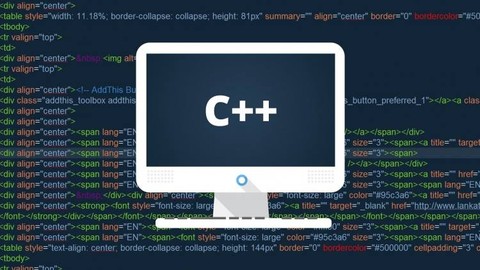Technical Analysis with Python for Algorithmic Trading
Loại khoá học: Programming Languages
Use Technical Analysis and Indicators for (Day) Trading. Create, backtest and optimize TA Trading Strategies with Python
Mô tả
(Latest course update and full code review in May 2023!)
"(How) Can I use Technical Analysis and Technical Indicators for Trading and Investing?" - This is one of the most frequently asked questions in trading and investing.
This course clearly goes beyond rules, theories, vague forecasts, and nice-looking charts. (These are useful but traders need more than that.) This is the first 100% data-driven course on Technical Analysis. We´ll use rigorous Backtesting / Forward Testing to identify and optimize proper Trading Strategies that are based on Technical Analysis / Indicators.
This course will allow you to test and challenge your trading ideas and hypothesis. It provides Python Coding Frameworks and Templates that will enable you to code and test thousands of trading strategies within minutes. Identify the profitable strategies and scrap the unprofitable ones!
The course covers the following Technical Analysis Tools and Indicators:
Interactive Line Charts and Candlestick Charts
Interactive Volume Charts
Trend, Support and Resistance Lines
Simple Moving Average (SMA)
Exponential Moving Average (EMA)
Moving Average Convergence Divergence (MACD)
Relative Strength Index (RSI)
Stochastic Oscillator
Bollinger Bands
Pivot Point (Price Action)
Fibonacci Retracement (Price Action)
combined/mixed Strategies and more.
This is not only a course on Technical Analysis and Trading. It´s an in-depth coding course on Python and its Data Science Libraries Numpy, Pandas, Matplotlib, Plotly, and more. You will learn how to use and master these Libraries for (Financial) Data Analysis, Technical Analysis, and Trading.
Please note: This is not a course for complete Python Beginners (check out my other courses!)
What are you waiting for? Join now and start making proper use of Technical Analysis!
As always, there is no risk for you as I provide a 30-Days-Money-Back Guarantee.
Thanks and looking forward to seeing you in the Course!
Bạn sẽ học được gì
Yêu cầu
Nội dung khoá học
Viết Bình Luận
Khoá học liên quan

Đăng ký get khoá học Udemy - Unica - Gitiho giá chỉ 50k!
Get khoá học giá rẻ ngay trước khi bị fix.


















Đánh giá của học viên
Bình luận khách hàng